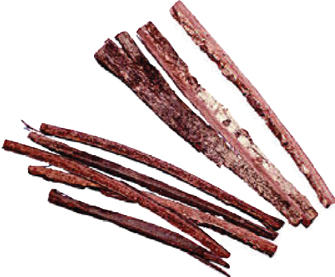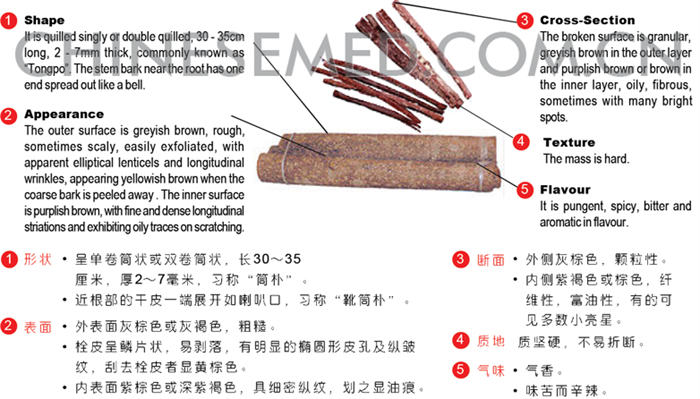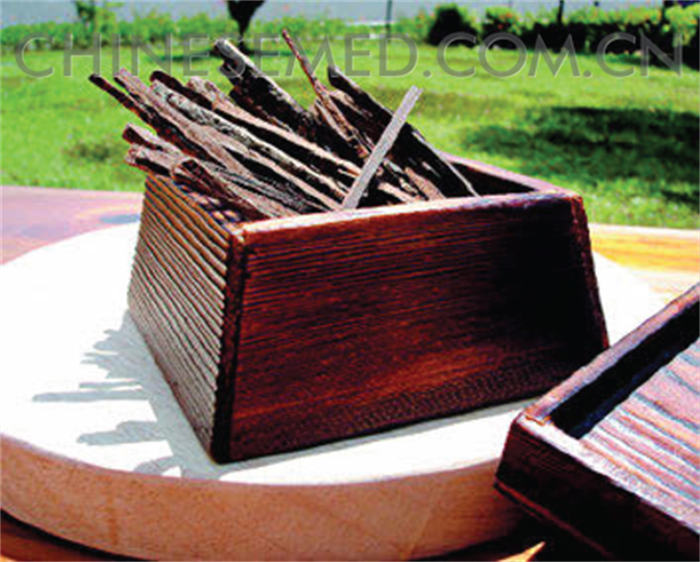

Source Magnolia Bark is the dried stem bark, root bark and branch bark of Magnolia officianlis Rehd. et Wils (Fam. Magnoliaceae).
Producing Areas Sichuan, Hubei and Anhui, etc.
Properties Bitter, Spicy, Warm
Channels Spleen, Stomach, Lung, Large Intestines
Action
Transforms phlegm and rids dampness and stagnation from the spleen and stomach. For indigestion, flatulence, loss of appetite, vomiting, diarrhoea and constipation.
Usage and Dosage
The crude is for relieving nausea and dyspnoea.
The stir-baked with ginger juice is for removing dampness and promoting digestion, stopping vomiting. 3 – 10g is decocted or used in pills or powder.
Notes Use with caution in pregnant women or those with dryness of fluid due to qi-deficiency.



It is quilled singly or pieced irregularly, sometimes curved like chicken intestines. It is hard and easily broken, with a fibrous broken surface.

It is quilled singly, 10 – 20cm long, 1 – 2mm thick, and is brittle with a fibrous broken surface.
Storage
Do not expose to light and wind as it loses its fragrance easily. Keep in a cool dry place and protect from moisture.
Description of Quality Herb
The good one is thick, fine, oily, strongly fragrant and with purplish brown inner surface and bright crystals on it.
Professional Advice
Fakes The fakes come from: Daye Mulam (Magnolia Henryi Dunn.), Weishi Mulan (Magnolia wilsonii Rehd. et Wils), Aoye Mulan (Magnolia sargentiana Rehd. et Wils.), Wangchun Yunan (Magnolia biondii Pampan.), Sichuan Mulian (Manglietia szechuanica Hu) and Daye Xinmujiang (Neolitsea levinei Merr.), Huangqi, Ezhangchai (Engelhardia roxburghiana Wall.).


